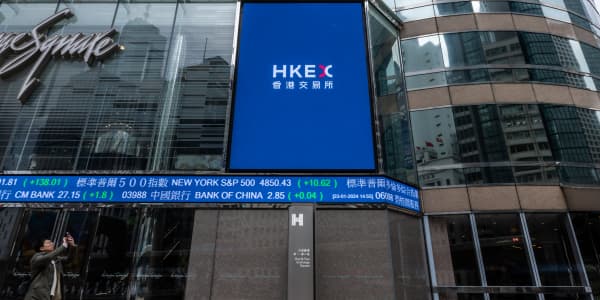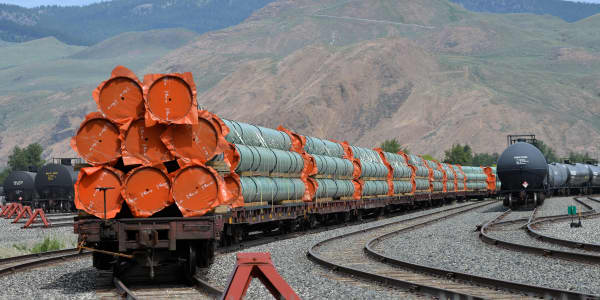The recession watch for the U.S. economy has been going on about a year and a half now, and, if current indicators are sign, it likely has a ways to go.
Wall Street has been forecasting an economic contraction since the early part of 2022, the result of confluence of factors.
To name a few: Two consecutive quarters of negative growth to start last year, a Federal Reserve rate-hiking campaign the likes of which often coincide with recessions, and multiple market and data signs that historically have been extremely reliable indicators that trouble is coming.
Yet, still no recession. So what gives?
"Your camel has a lot of straws on its back. Eventually, it's going to be too much," said Joseph LaVorgna, a top economic advisor during the Trump administration and now chief economist at SMBC Nikko Securities America. "Now, when that is, it's hard to say."
Read more in CNBC Pro's Quarterly Investment Guide
LaVorgna is in the camp that says it will be difficult if not impossible for the U.S. to avoid at least a modest period of negative growth in the second half.
Among the most common factors cited are those 10 rate increases from the Fed since March 2022 and the lagged impact they're expected to have on the economy. Other risk factors include low confidence readings from small business, a manufacturing contraction and leading indicators all consistent with recessions.
'They will turn very quickly'
Even the uncanny strength in the labor market is being seen as a weak point in that many economists think it can't continue and is a lagging indicator in any event.
Indeed, job growth was stunning in the first half of the year — an addition of 1.57 million workers in nonfarm payrolls just through May and an unemployment rate still at just 3.7%. There were still 5 million more jobs than available workers through April, indicating considerable slack in the labor market, though many economists think that dynamic is ready to change.
"My guess is when things turn, they will turn very quickly," LaVorgna said. "The only way we won't have a deep recession is if the Fed has the courage to ease very quickly."
To a person, though, Fed officials don't seem to have any appetite for easier monetary policy. At the most recent meeting of the rate-setting Federal Open Market Committee, every member indicated in their economic outlooks that the central bank's benchmark rate would stay at least where it is now, with most expecting two quarter-point moves higher before the end of the year.
Yet so far, the markets and economy have held up well.
GDP unexpectedly rose at a 2% annualized pace in the first quarter and, according to the Atlanta Fed's data tracker, is on pace to increase another 2.2% in the second quarter. For its part, the stock market has soared. That's hardly the stuff recessions are made of.
The case for no recession
"The economy has a fighting chance, a better than even chance, of skirting a full-blown economic downturn," said Mark Zandi, chief economist at Moody's Analytics. "The second half will be difficult. The economy will be basically treading water, not going anywhere fast, but that's exactly what the Fed wants."





